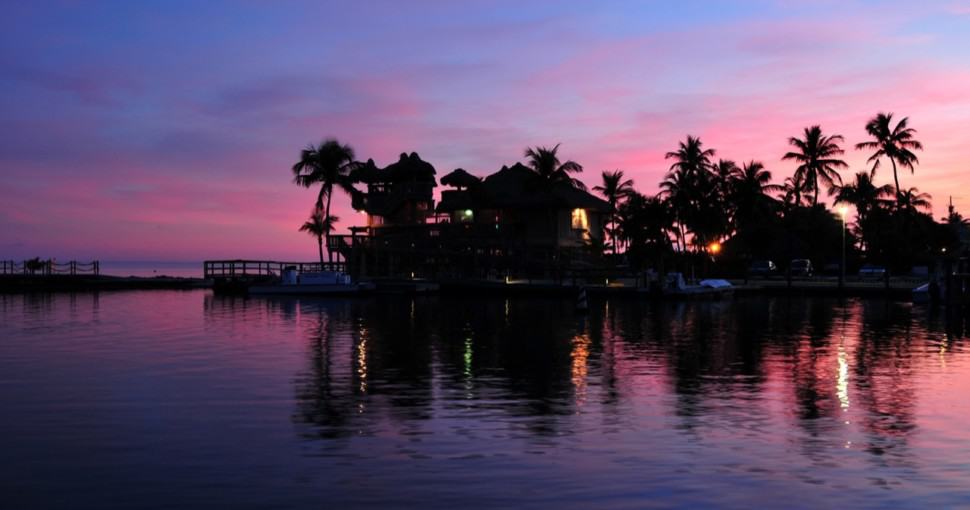Florida – the Sunshine State – is known for its beautiful sandy beaches and warm weather. Like several other U.S. states, it is also home to gorgeous and luscious forests. All around the state, you will find stunning trees along coastlines and in yards of homes. From shrubs to small trees like redbuds and large live oaks, you will find trees for any landscape in Florida.
Contents
- 1. Live Oak (quercus virginiana)
- 2. Bald Cypress (taxodium distichum)
- 3. Florida Pines (pinus palustris)
- 4. Florida Maple (acer floridanum)
- 5. Flowering Dogwood (cornus florida)
- 6. Black Mangrove (avicennia germinans)
- 7. Buttonwood (conocarpus erectus)
- 8. Sweetgum (liquidambar styraciflua)
- 9. Dahoon Holly (ilex cassine)
- 10. American Hornbeam (carpinus caroliniana)
- 11. Swamp Tupelo (nyssa sylvatica var. biflora)
- 12. Common Persimmon (diospyros virginiana)
- 13. Farkleberry (vaccinium arboreum)
- 14. White Ash (fraxinus americana)
- 15. Red Buckeye (aesculus pavia)
- 16. White Fringetree (chionanthus virginicus)
- 17. Devilwood (osmanthus americanus)
- 18. Geiger Tree (cordia sebestena)
- 19. Florida Strangler Fig (ficus aurea)
- 20. Palm Trees (arecaceae)
- 21. Crepe Myrtle (lagerstroemia)
- 22. Plumeria (Frangipani)
- 23. Dwarf Poinciana (caesalpinia pulcherrima)
- 24. Purple Glory Tree (tibouchina granulosa)
- 25. Jacaranda (jacaranda mimosifolia)
- 26. Trumpet Tree (tabebuia)
- 27. Black Olive (olea europaea)
- 28. Mahogany (Swietenia mahagoni)
- 29. Gumbo Limbo (bursera simaruba)
- 30. Japanese Fern Tree (filicium decipiens)
- 31. Jackfruit (artocarpus heterophyllus)
The tropical and subtropical climate of Florida is perfect for growing trees and plant species that prefer humidity. The state has a huge variety of native trees, more than any other state in the U.S. (except Hawaii). Ash, oak, maple, mahogany, basswood, and cypress are some of the most common tree species found in Florida, but you can also find different kinds of pine, gum, and mangrove trees throughout the state. Many tropical and subtropical plants that are native to the Caribbean have their northern limit in south Florida.
Florida is home to several attractive and hardy species of trees of different sizes. Whether you are looking to plant a shade tree, a tree that produces fruit, a native tree, or a tree that will add colorful appeal to your yard with beautiful leaves, crowns, and flowers, you can fulfill your heart’s desire in the Sunshine State.
In this article, we will look at the 31 most common trees found in Florida. We will also discuss their characteristics, origins, and the kind of landscape they can grow in. By the end of this article, you will be able to select the best tree species for landscaping and transforming your backyard into a place you’ll cherish.
1. Live Oak (quercus virginiana)
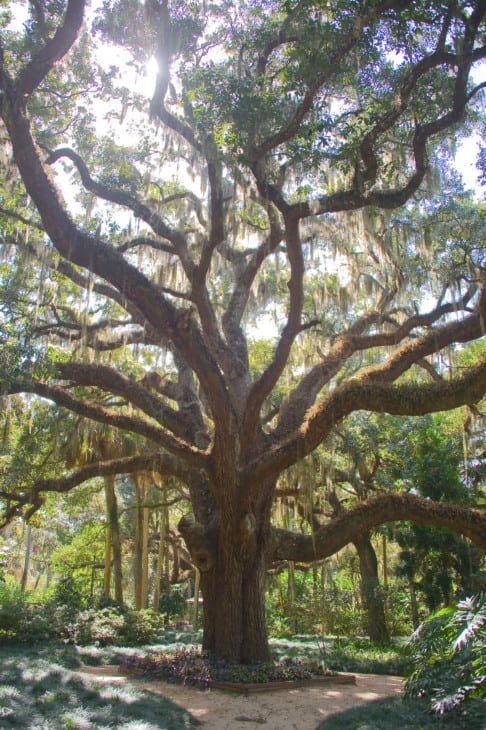
Live oak is a majestic tree often seen in the background of many picturesque spots in Central Florida. It is an oak species that can grow very large – up to 60 feet tall! It has oval, stiff leaves with shiny upper surfaces. If you have one or two of these in your yard, call a professional for branch trimming, especially before hurricane season.
2. Bald Cypress (taxodium distichum)
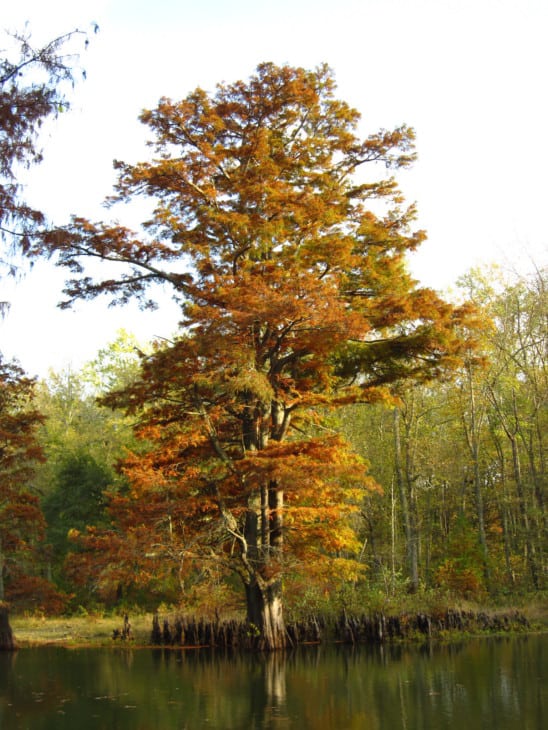
You can find an abundance of bald cypress trees in Central Florida. This specific type of cypress loves the water and wet soil and provides habitat to turtles and alligators. It can grow up to a height of 120 feet. A coniferous tree, it has needle-like leaves shed during the fall months and bloom again in the spring.
3. Florida Pines (pinus palustris)
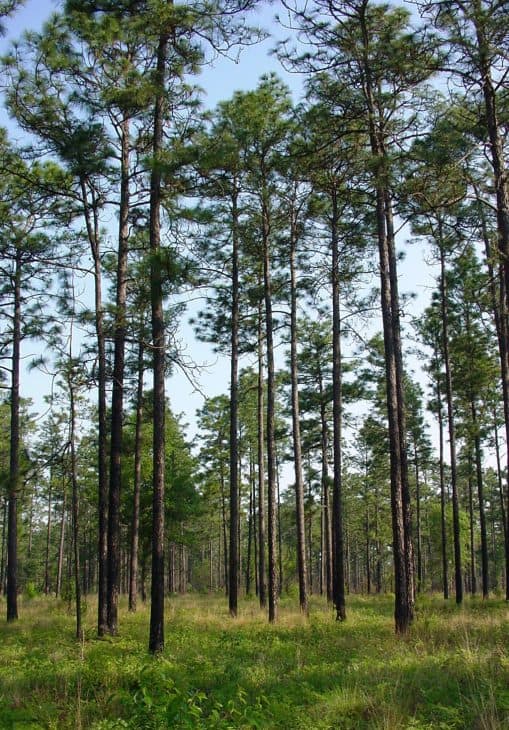
Pine trees are a staple throughout Florida and can find different kinds throughout the state. The three most common in Florida are slash pine, loblolly pine, and sand pine. The loblolly and slash pine can grow over 100 feet tall, whereas the sand pine normally gets to 25 feet only. They have needle-like leaves. Unfortunately, these trees are not ideal for most yards because they drop many cones and produce a lot of sticky sap.
4. Florida Maple (acer floridanum)
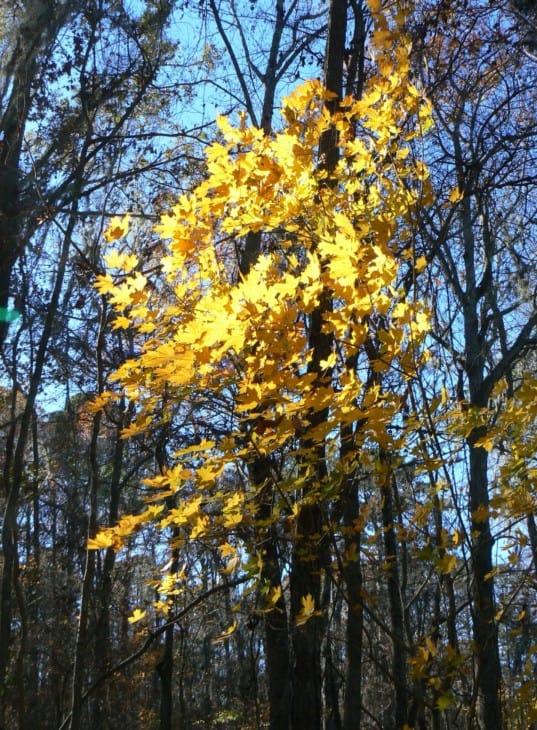
Two types of maple trees are abundant throughout Central Florida: the red maple and the Florida maple. The Florida maple is more commonly found throughout the state. It has crisp, winged leaves in warm autumn tones, making it a top choice for aesthetic purposes. The Florida maple can grow to a height of 50 to 60 feet.
5. Flowering Dogwood (cornus florida)
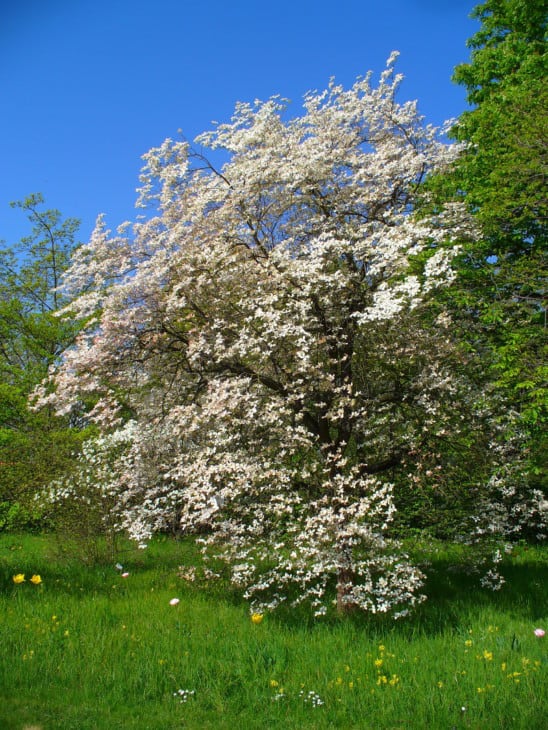
The flowering dogwood is an impressive flowering tree and one of the most popular trees native to Florida. It is a medium-sized tree that grows to a height of 15 to 20 feet. In spring, the branches sprout beautiful, white flowers, and during fall, the leaves turn a bright red while the tree produces red berries that native birds devour.
6. Black Mangrove (avicennia germinans)
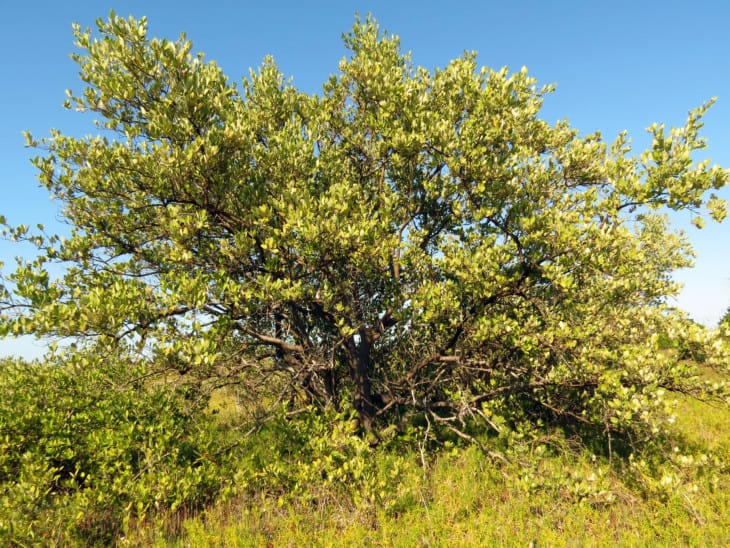
Black mangrove is low, shrub-like vegetation found in high saline areas and high tide zones. It inhibits Florida’s coastlines from the Keys north to Cedar Key on the west coast and St. Augustine on the east coast. It reaches a height of over 60 feet in some areas, but it is found in smaller heights (50 feet) in Florida. It has a dark trunk and silvery-green leaves.
7. Buttonwood (conocarpus erectus)
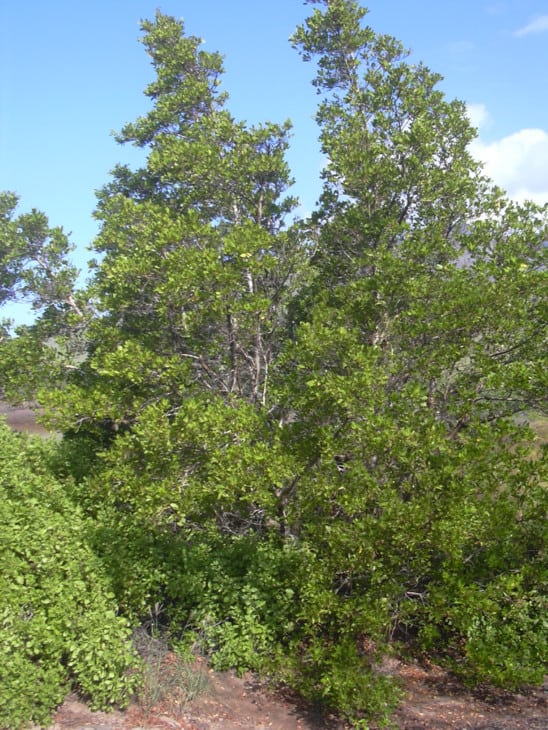
Buttonwood is a mangrove shrub belonging to the Combretaceae family. It grows on shorelines in tropical and subtropical regions around the world, such as Florida. It grows to 15 to 20 feet and is highly tolerant of sandy soils, sunshine, and salty conditions. It has simple, short, slightly winged leaves.
8. Sweetgum (liquidambar styraciflua)
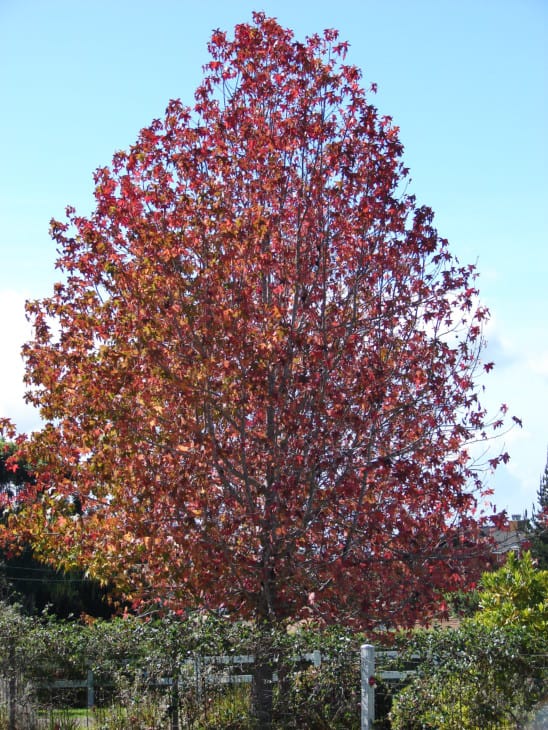
Sweetgum, also known as American sweetgum, redgum, and hazel pine, is a deciduous tree native to warm and temperate parts of North America and tropical regions of Central America and Mexico. It can grow to a height of 50 to 70 feet and has star-shaped lobed leaves. Commercially, sweetgum wood is used to make furniture, doors, crates, baskets, railroad ties, and pallets.
9. Dahoon Holly (ilex cassine)
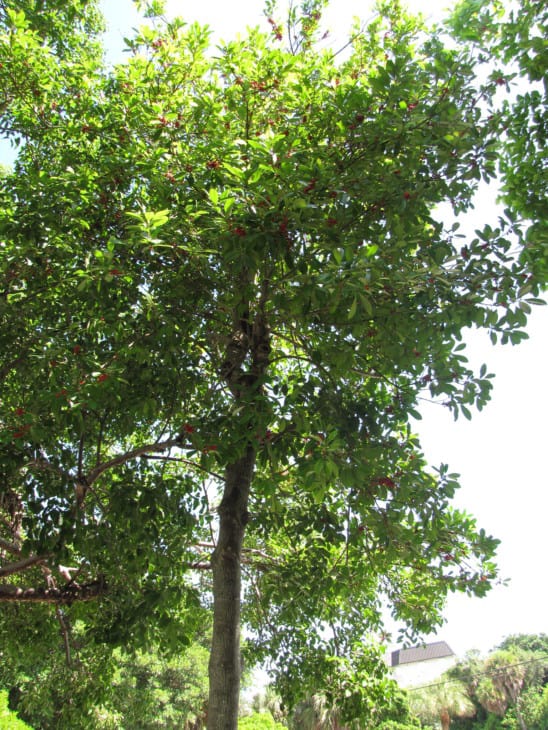
Dahoon holly is a small to medium-sized tree native to the southeastern coast of North America. You can find it in the U.S., Mexico, and the Caribbean along the coast of the Bahamas, Puerto Rico, and Cuba. The tree reaches a height of 20 to 30 feet and has smooth, supple, shiny, and dark evergreen leaves.
10. American Hornbeam (carpinus caroliniana)
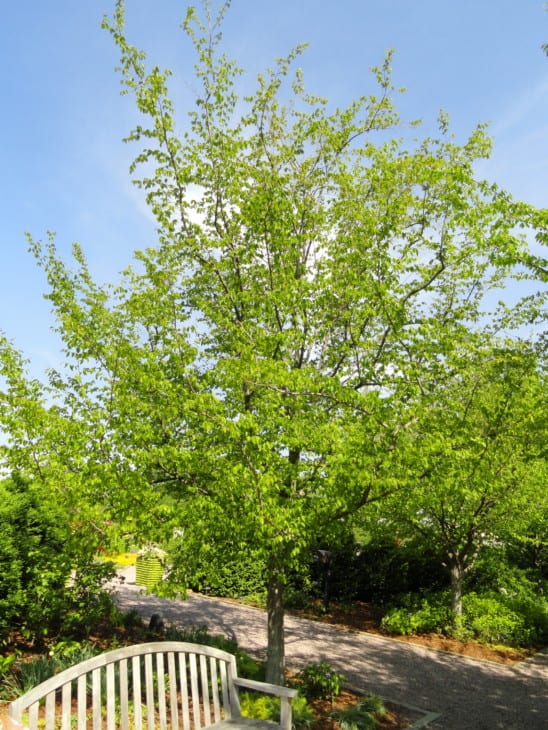
The American hornbeam, also known as ironwood and blue-beech, is a small hardwood tree belonging to the Carpinus family. It is native to eastern North America and can be found in Minnesota, southern Ontario, Maine, eastern Texas, and northern Florida. It grows 20 to 40 feet tall and has alternate, simple leaves with fine teeth, tapering, and sharp points.
11. Swamp Tupelo (nyssa sylvatica var. biflora)
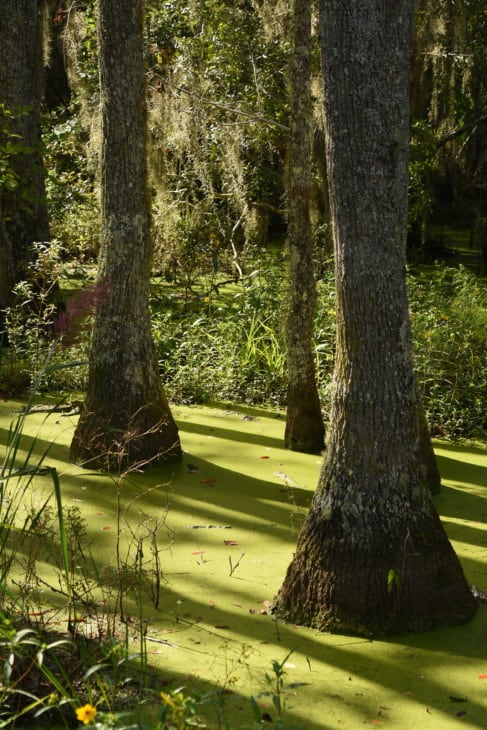
Swamp tupelo, also known as the swamp black-gum, is a deciduous tree native to wetland habitats. It mostly grows in coastal plains in Delaware, eastern Maryland, southeastern Virginia, eastern Texas, and southern Florida. It grows to as tall as 60 to 100 feet and has simple, oval-shaped leaves with rounded bases. It also produces fruit that blossoms when the leaves change color.
12. Common Persimmon (diospyros virginiana)
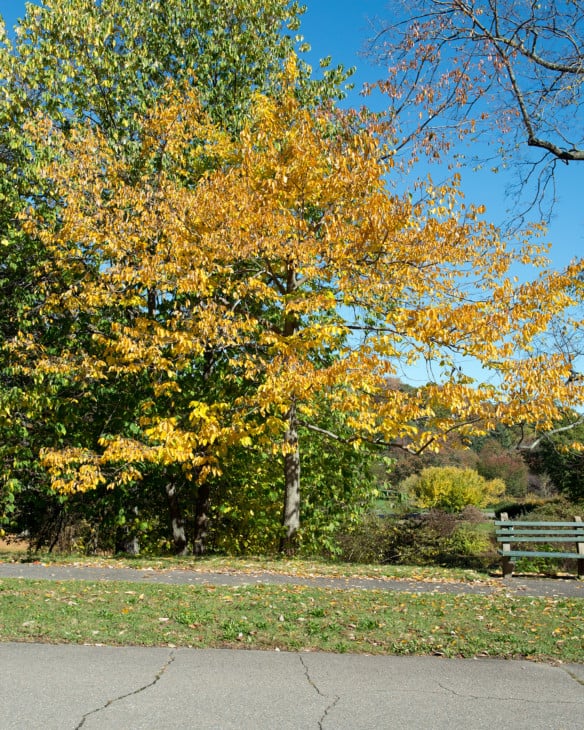
Common persimmon, also called American persimmon, is a tree species found in the east from southern Connecticut to Florida and in the west in Louisiana, Oklahoma, Texas, Kansas, and Iowa. It is a short, shrubby tree that grows to a height of 15 feet in old fields, but in rich, moist soil, it can grow as tall as 100 feet. The tree produces large, oval, mature leaves that usually turn yellow-green in fall. It also produces orange edible fruit that attracts wildlife.
13. Farkleberry (vaccinium arboreum)
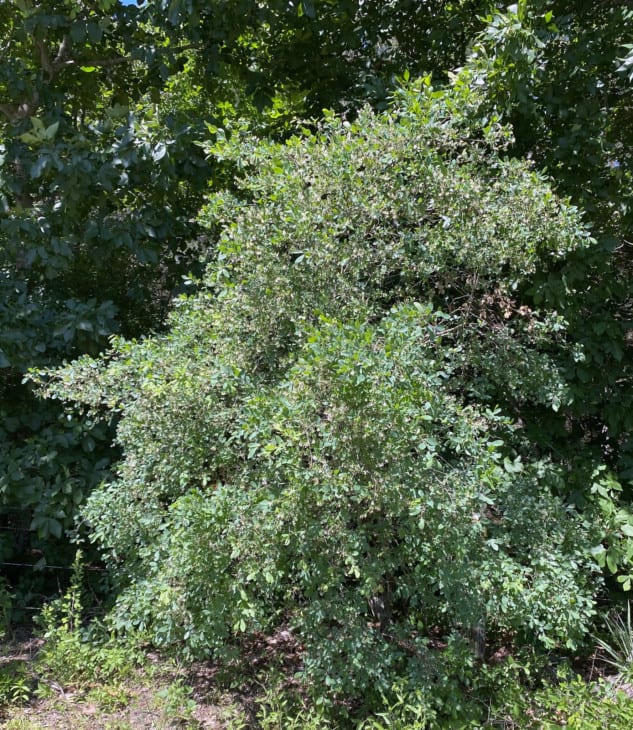
Farkleberry, also known as sparkleberry, is a deciduous shrub or small tree native to the southeastern and south-central U.S. It is found in abundance in Florida. It grows up to 20 feet tall and prefers rocky and sandy woodlands. The tree has small, shiny, elliptical dark-green leaves that turn red during fall.
14. White Ash (fraxinus americana)
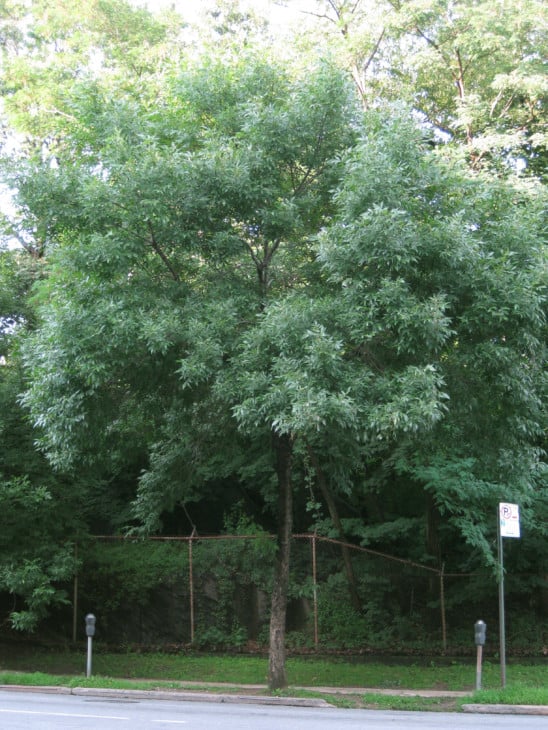
White ash, also referred to as American ash, is a species of ash tree originating from eastern and central North America. It is mostly found in hardwood forests in Nova Scotia, Minnesota, northern Florida, and eastern Texas. It is a fast-growing tree that can attain a height of 80 feet. It has oval to oblong, dark-green leaves that measure 8 to 12 inches.
15. Red Buckeye (aesculus pavia)
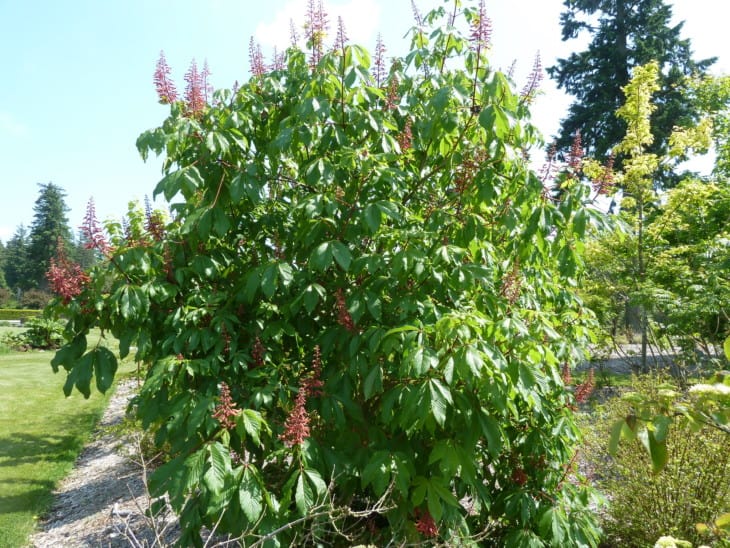
Red buckeye, also known as the firecracker plant, is a species of a deciduous flowering plant. It is a shrub/small tree native to the eastern and southern parts of the United States, including Florida. It grows up to 10 to 20 feet tall and produces opposite, fan-shaped ovate leaves with pointed tips that grow up to 6 inches long.
16. White Fringetree (chionanthus virginicus)
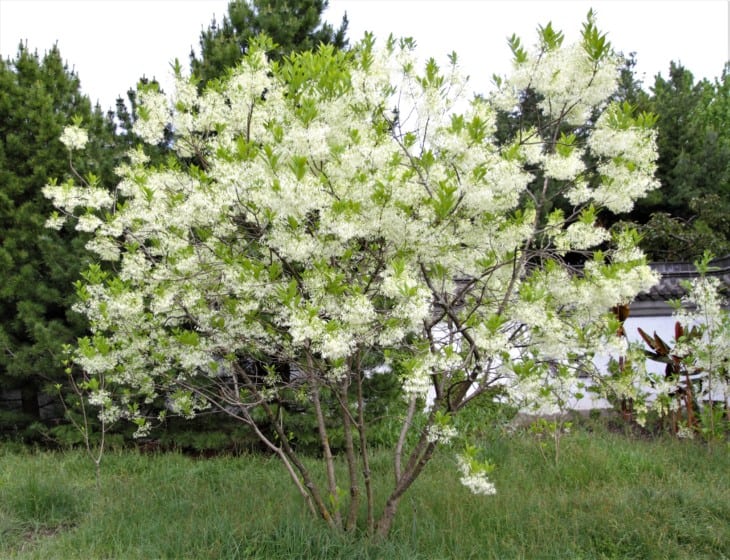
White fringetree is a small, deciduous tree species belonging to the Oleaceae family. It is native to the lowlands and savannas of the southeastern United States, including New Jersey and Florida. It can grow to a height of 12 to 20 feet and has 4 to 8 inches long leaves. During springtime, the tree produces fragrant flower clusters with white fringe-like petals.
17. Devilwood (osmanthus americanus)
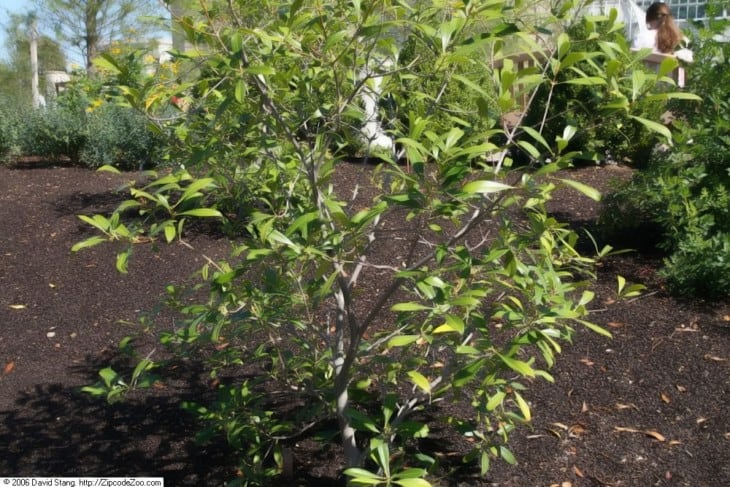
Also called the American olive, devilwood is an evergreen small tree/shrub native to southeastern North America. It is a highly attractive tree that grows between 15 and 25 feet in height. It has lance-shaped, glossy, and leathery dark-green leaves and open branches. It grows easily and is also pest-resistant, which makes it a popular choice for naturalizing borders.
18. Geiger Tree (cordia sebestena)
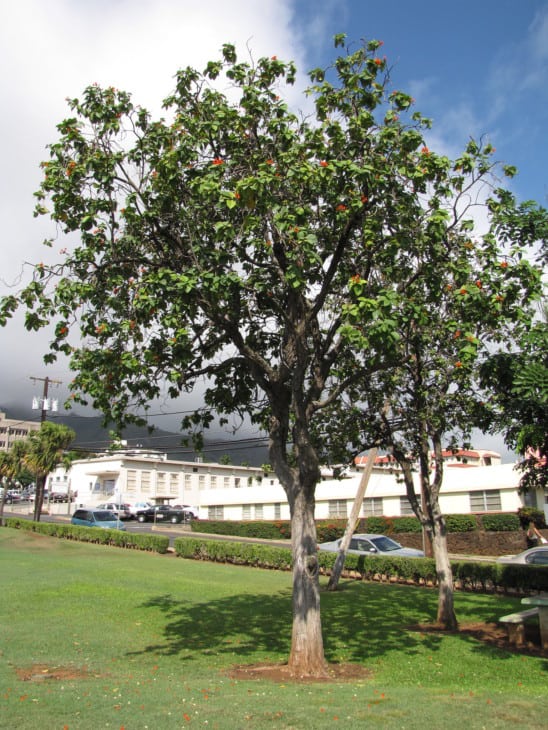
Geiger tree is a shrubby tree belonging to the Boraginaceae family. It is native to the American tropics and can be found in abundance in southern Florida, the Bahamas, and Central America. It is a dense, rounded, evergreen tree that can easily tolerate droughts but not frost. It grows up to 25 feet tall and produces long, stiff, dark-green leaves.
19. Florida Strangler Fig (ficus aurea)
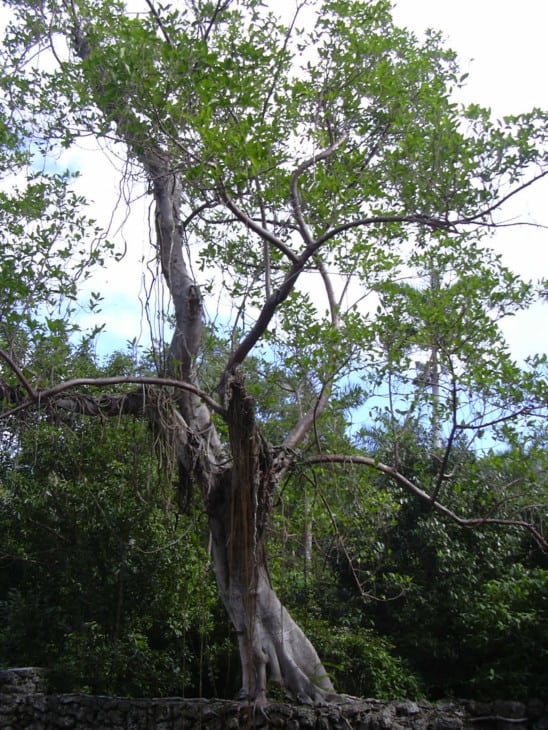
Also referred to as the golden fig, the Florida strangler fig is an evergreen tree species belonging to the Moraceae family. It is indigenous to Florida, the Caribbean, Mexico, and Central America. It grows quite rapidly and can reach up to 60 feet in height. It has broad lower limbs, a rigid trunk, and leathery and oval-shaped leaves with rounded or heart-shaped bases.
20. Palm Trees (arecaceae)
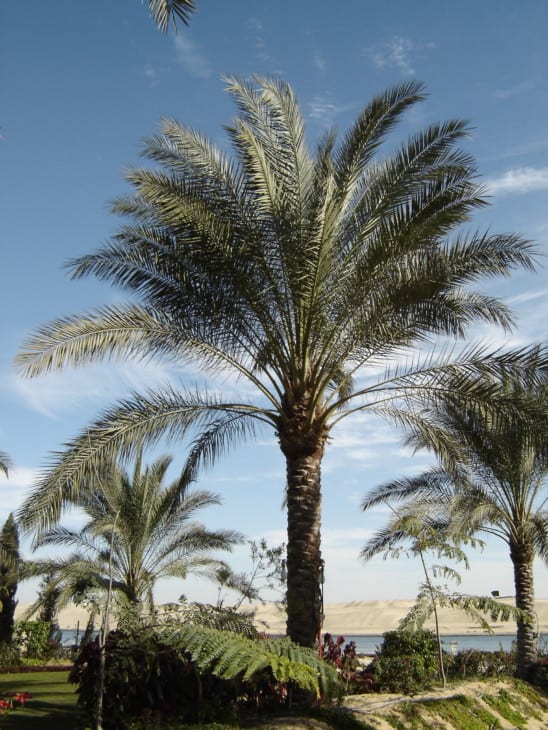
Palm trees are perennial tropical and sub-tropical flowering plants belonging to the Palmae family. They can be found in almost every type of habitat in the tropics. They grow up to 30 to 50 feet in height and have erect trunks and slender stems. They produce large, evergreen leaves that are either fan-shaped or feather-shaped.
21. Crepe Myrtle (lagerstroemia)
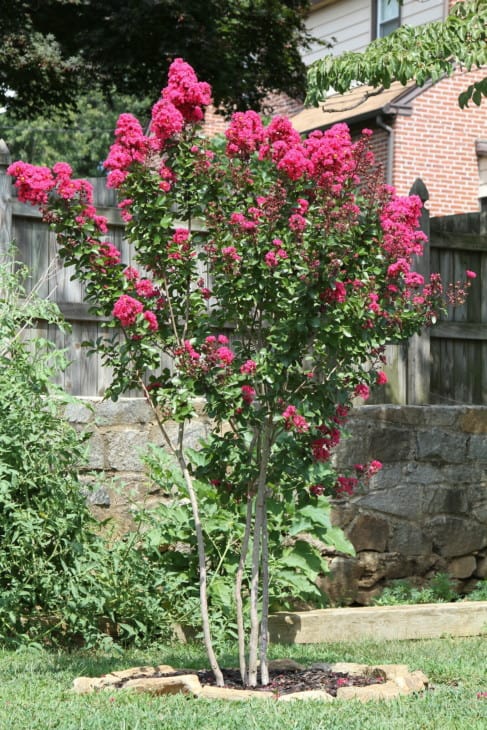
Crepe myrtle is a genus of approximately 50 evergreen and deciduous shrubs and trees endemic to Southeast Asia, northern Australia, and the Indian subcontinent. It is cultivated in warm climate regions worldwide. The semi-dwarf varieties of crepe myrtles grow as tall as 4 to 8 feet, whereas the large varieties grow up to 20 feet. The tree produces dark green leaves that turn red, yellow, or orange during fall.
22. Plumeria (Frangipani)
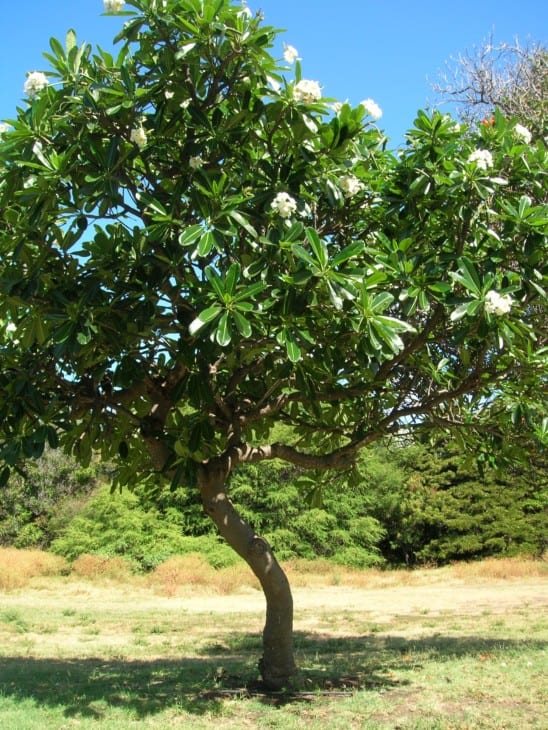
Plumeria is a flowering plant belonging to the Apocynaceae family. Most plumeria plants are deciduous shrubs or small trees native to Mexico, Central America, and the Caribbean. They are mostly grown as ornamentals in warm regions. They can reach a height of up to 20 feet and have widely-spaced branches and pointed oval leaves.
23. Dwarf Poinciana (caesalpinia pulcherrima)
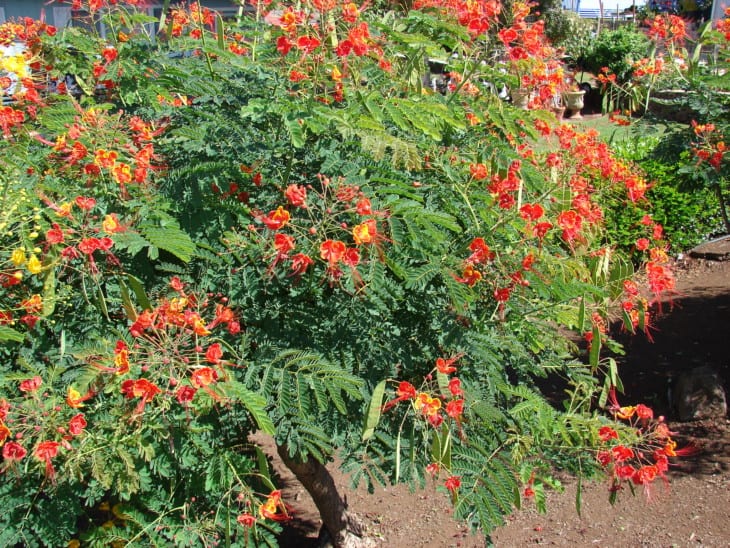
Dwarf Poinciana, also known as the Peacock Flower, is a species of flowering plant belonging to the Fabaceae family. It is native to the tropics and subtropics of North and South America. It grows to a height of 12 to 15 feet and has low branches. The leaves are feathery, fern-like, and bluish-green, measuring 8 to 10 inches in length.
24. Purple Glory Tree (tibouchina granulosa)
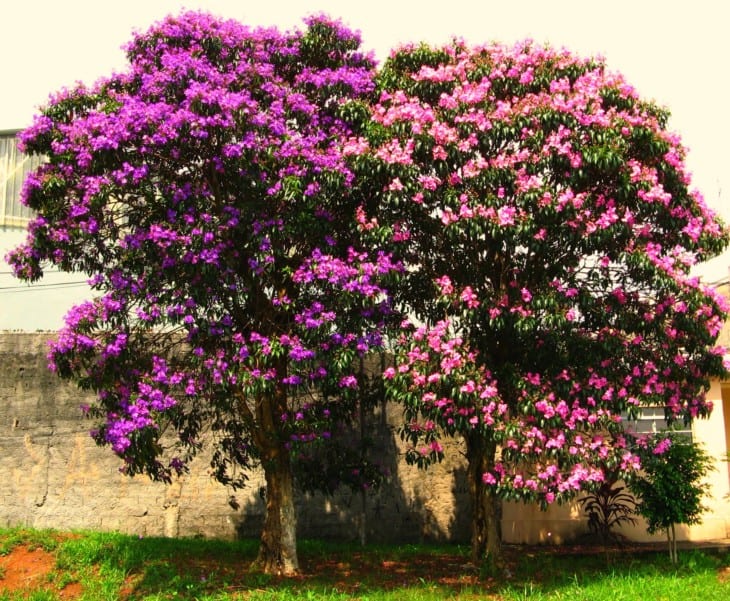
The purple glory tree is a species of evergreen shrubs or small tree belonging to the Melastomataceae family. It is also known as the princess flower because of its bright purple flowers that bloom all year round. It is used widely for gardening in Brazil. The tree can grow to a height of 10 to 15 feet and has glossy, dark green leaves measuring 5 to 8 inches in length.
25. Jacaranda (jacaranda mimosifolia)
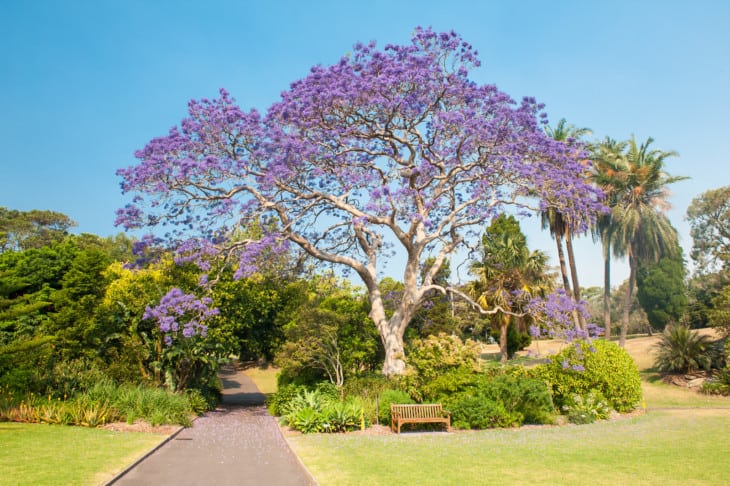
Jacaranda, also known as the black poui or fern tree, is a sub-tropical tree native to south and central South America. It is widely planted across the region because it has very attractive, long-lasting violet flowers. It reaches a height of 25 to 40 feet and flowers best in poor soil. It has finely-cut, ferny leaves that drop by the end of the dry season.
26. Trumpet Tree (tabebuia)
The trumpet tree is a flowering plant belonging to the Bignoniaceae family. Commonly known as roble, it is abundant in the American tropics and subtropics, from Mexico and the Caribbean to Argentina. It grows to a height of 20 to 30 feet and produces 2 to 3-inch long flowers in shades of pink, purple, and white, and silvery leaves.
27. Black Olive (olea europaea)
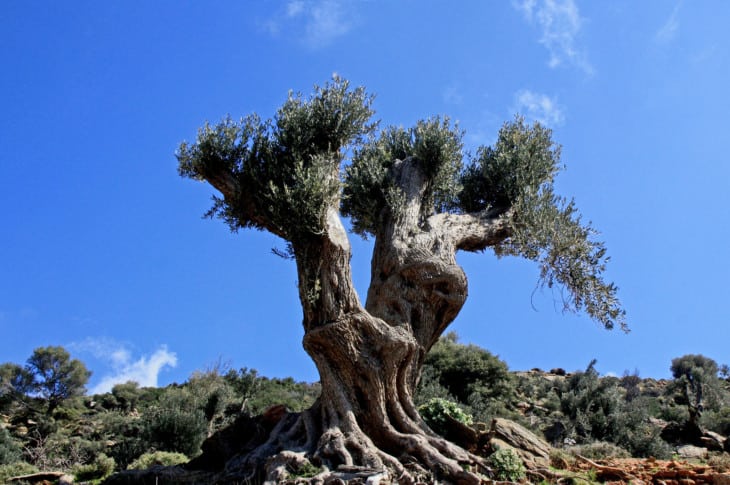
The black olive tree is a sub-tropical, evergreen shrub or small tree belonging to the Olea europaea family. It is native to Mediterranean Europe, Asia, and Africa. It produces green and purple olives that are artificially blackened and sold commercially. The tree grows to a height of 20 to 30 feet and has a rounded crown.
28. Mahogany (Swietenia mahagoni)
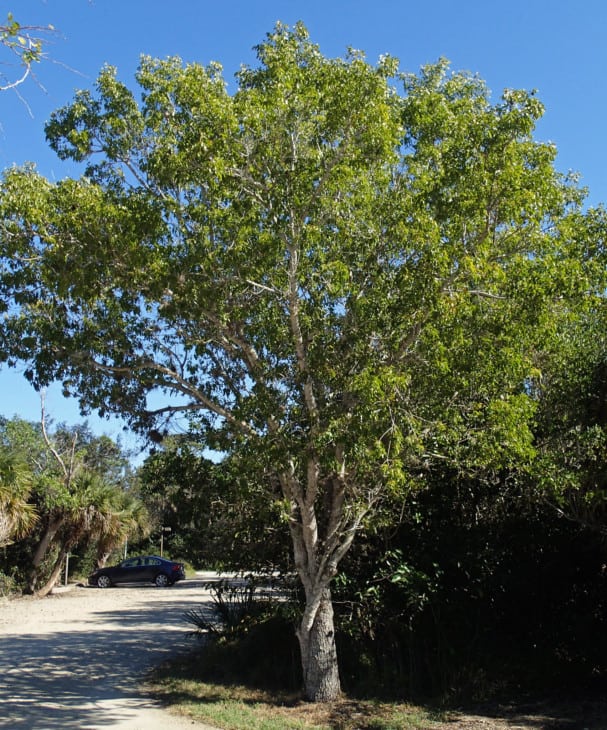
Mahogany, also known as American mahogany, is a hard-grained, reddish-brown evergreen species of Swietenia indigenous to South Florida, the Caribbean, Cuba, Jamaica, and Hispaniola. This tree can grow up to 75 feet in height and is commonly used as a shade tree or street tree. It produces oval-shaped leathery leaflets that arise from a single petiole.
29. Gumbo Limbo (bursera simaruba)
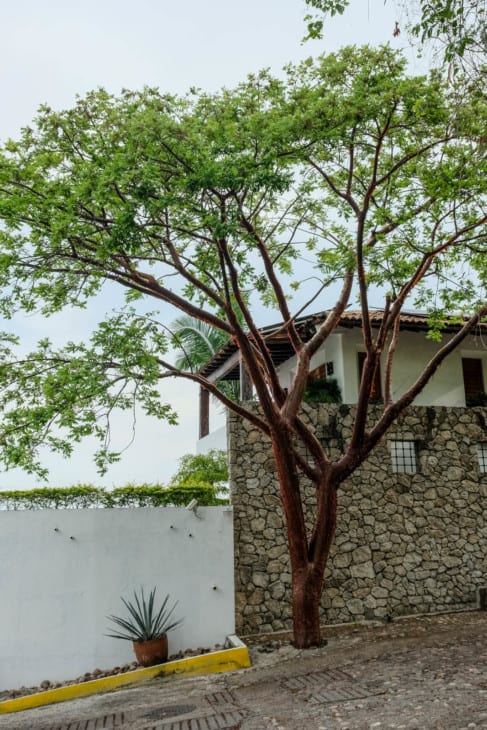
Gumbo limbo, also known as copper wood and West Indian birch, is a tree species from the Burseraceae family found in the tropics of the Americas from southern Florida to Mexico, the Caribbean, and Venezuela. It is a fast-growing tree that can grow 6 to 8 feet in just 18 months. The tree can grow as tall as 50 feet and splits into several branches near the ground. It has broad, ovate leaflets and shiny, dark red bark.
30. Japanese Fern Tree (filicium decipiens)
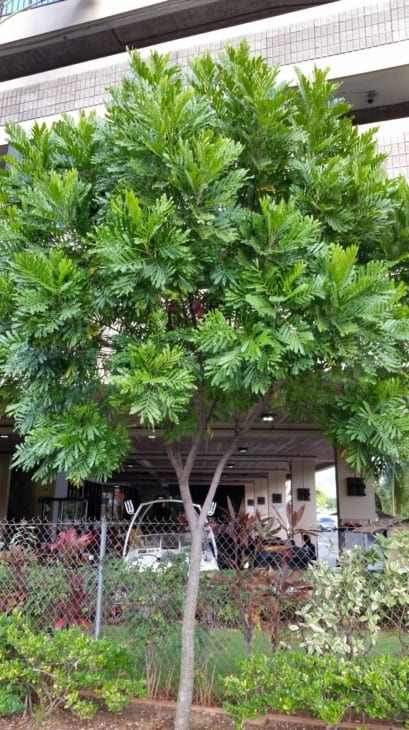
The Japanese fern tree belongs to the Filicium family. It is indigenous to East Africa, India, Madagascar, and Sri Lanka. It is planted as an ornamental tree in several parts of the world. It is a slow-growing tree with a straight, short trunk and dense neatly-shaped crown. The Japanese fern tree grows as tall as 88 feet in native forests and 65 feet in other areas. It has large, fern-like showy, glossy-green elongated leaflets that grow up to 1.3 feet long.
Related: Are Ferns Poisonous?
31. Jackfruit (artocarpus heterophyllus)
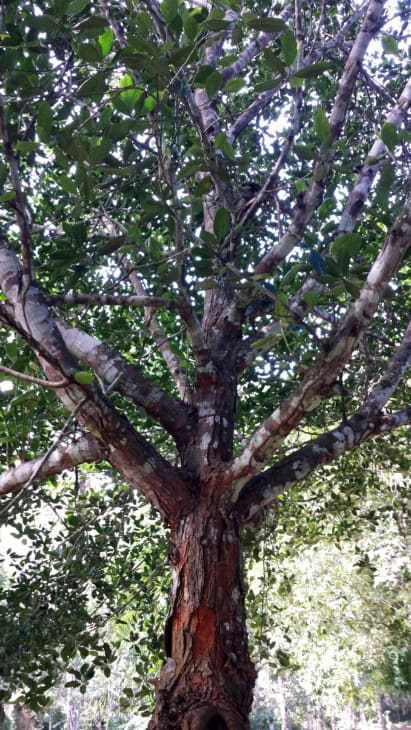
Jackfruit, commonly known as the jack tree, is a deciduous tree that belongs to the fig, mulberry, and breadfruit family. It is found in Florida but has its origins in South India, Sri Lanka, and Malaysia. The tree grows to an average height of 60 feet and produces stiff evergreen leaves. It also produces a fruit known as jackfruit, which is the largest edible fruit in the world.

